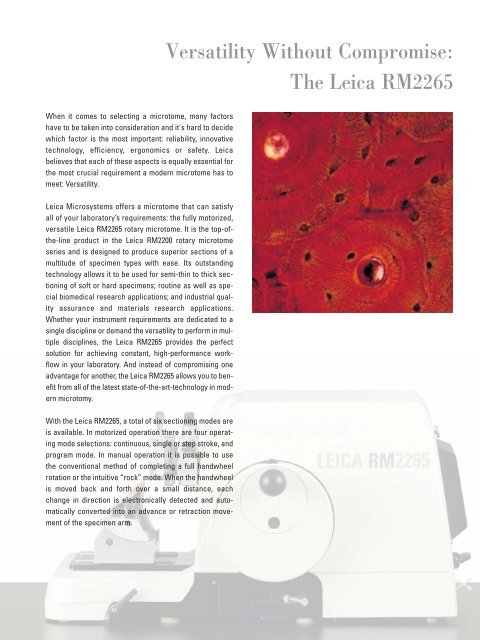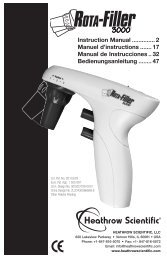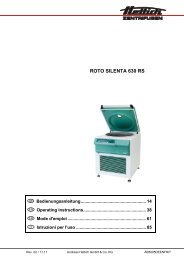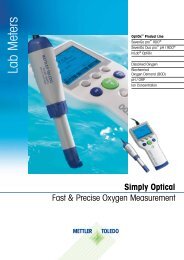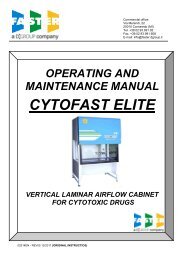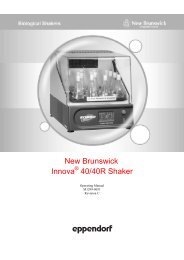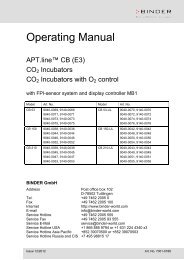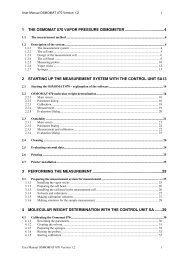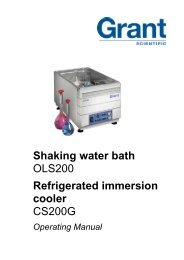Leica RM2125 RTS Manual Microtome - Wolf Laboratories
Leica RM2125 RTS Manual Microtome - Wolf Laboratories
Leica RM2125 RTS Manual Microtome - Wolf Laboratories
Create successful ePaper yourself
Turn your PDF publications into a flip-book with our unique Google optimized e-Paper software.
When it comes to selecting a microtome, many factors<br />
have to be taken into consideration and it's hard to decide<br />
which factor is the most important: reliability, innovative<br />
technology, efficiency, ergonomics or safety. <strong>Leica</strong><br />
believes that each of these aspects is equally essential for<br />
the most crucial requirement a modern microtome has to<br />
meet: Versatility.<br />
<strong>Leica</strong> Microsystems offers a microtome that can satisfy<br />
all of your laboratory’s requirements: the fully motorized,<br />
versatile <strong>Leica</strong> RM2265 rotary microtome. It is the top-ofthe-line<br />
product in the <strong>Leica</strong> RM2200 rotary microtome<br />
series and is designed to produce superior sections of a<br />
multitude of specimen types with ease. Its outstanding<br />
technology allows it to be used for semi-thin to thick sectioning<br />
of soft or hard specimens; routine as well as special<br />
biomedical research applications; and industrial quality<br />
assurance and materials research applications.<br />
Whether your instrument requirements are dedicated to a<br />
single discipline or demand the versatility to perform in multiple<br />
disciplines, the <strong>Leica</strong> RM2265 provides the perfect<br />
solution for achieving constant, high-performance workflow<br />
in your laboratory. And instead of compromising one<br />
advantage for another, the <strong>Leica</strong> RM2265 allows you to benefit<br />
from all of the latest state-of-the-art-technology in modern<br />
microtomy.<br />
With the <strong>Leica</strong> RM2265, a total of six sectioning modes are<br />
is available. In motorized operation there are four operating<br />
mode selections: continuous, single or step stroke, and<br />
program mode. In manual operation it is possible to use<br />
the conventional method of completing a full handwheel<br />
rotation or the intuitive “rock” mode. When the handwheel<br />
is moved back and forth over a small distance, each<br />
change in direction is electronically detected and automatically<br />
converted into an advance or retraction movement<br />
of the specimen arm.<br />
Versatility Without Compromise:<br />
The <strong>Leica</strong> RM2265


